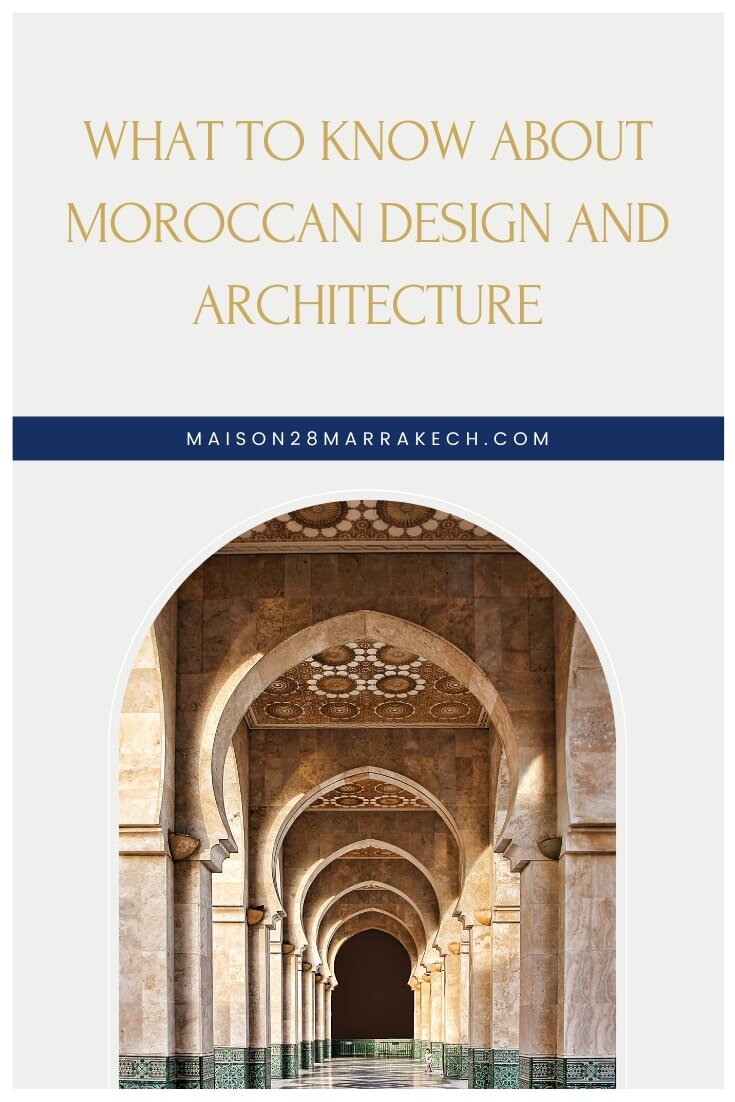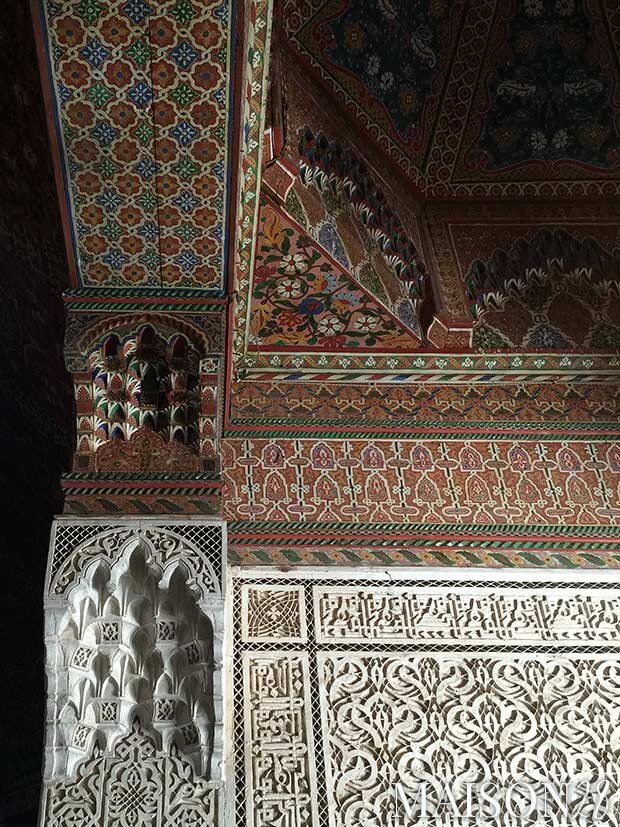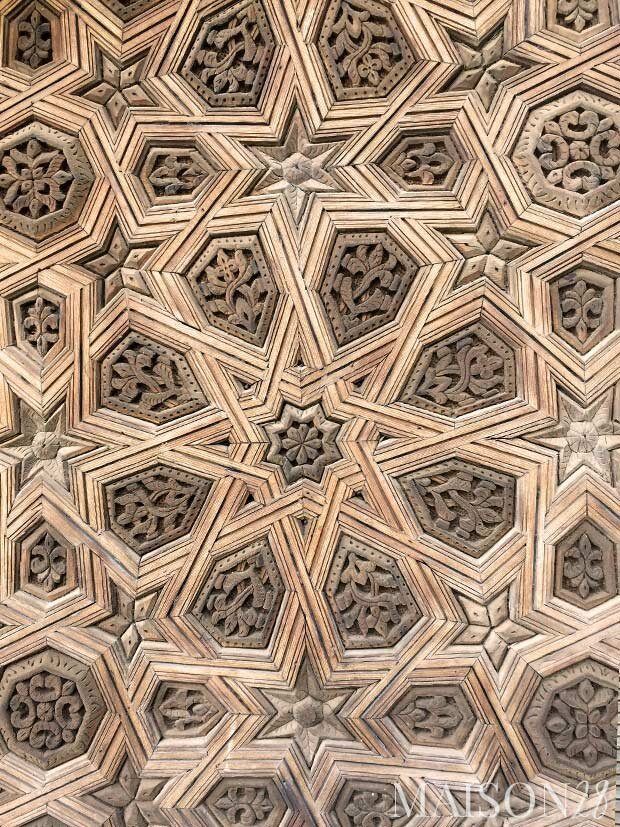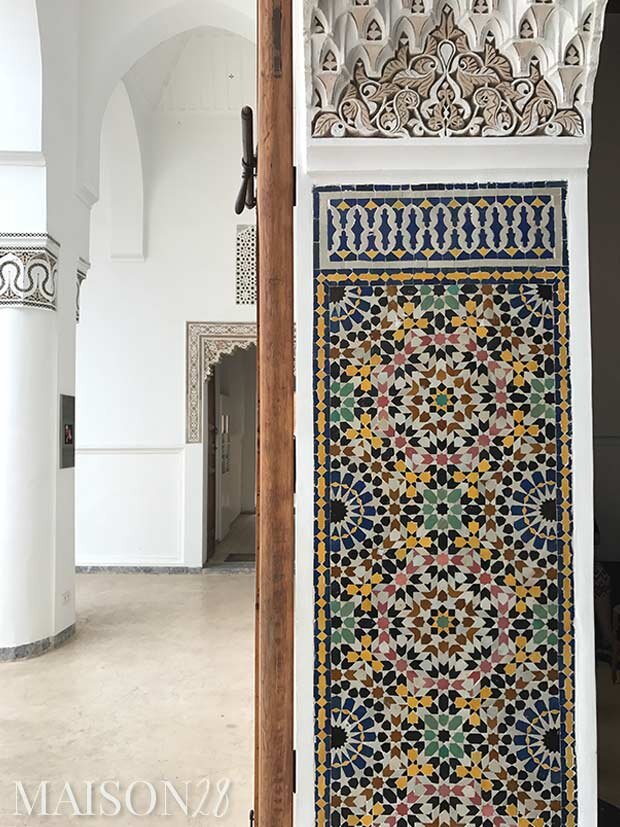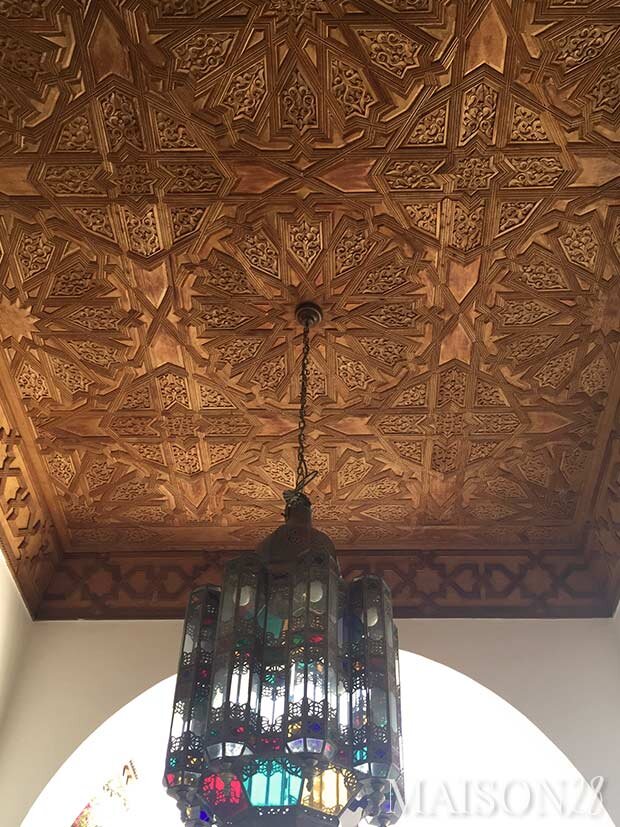Moroccan Design — Art in Architecture
If you only travel to Morocco simply to marvel a the amount and quality of artistic design and details seen in classic Moroccan architecture you will be richly rewarded at every turn.
For me, these exquisite details, chiseled and painted and sculpted by thousands of dedicated craftsman over hundreds of years, represent the soul of the city. And they are certainly one of many things about Marrakech that entices and inspires artists and creative spirits here-drawing them in and luring them back again and again.
You will be visually inspired almost everywhere you look in Marrakech-even a humble, crumbling wall here seems to possess its own magic! The most exquisite examples of Moroccan craftsmanship in architecture, however, can be found in the city’s preserved, historical monuments such as the Palais Bahia. Here you will find room after room with the most exquisite zouak painted cedar wood ceilings. The layers of floral and geometric patterns glow with hand-painted egg tempera paint that has been tinted with natural, ground pigments such as saffron and poppy seeds.
Also at the Palais Bahia, you will find many examples of finely carved gypsum plaster (geps)-some which are left simply white and some that have been hand-painted. The designs are transferred to the plaster using stencils and a pounce bag. Then the pattern is painstakingly carved in a succession of 4-5 layers, each adding another element of detail and refinement.
Elaborately carved wood-seen on doors, panels, furniture and ceilings is another artistic element commonly found in Moroccan architecture. This beautiful doorway was photographed on a private tour of the former palace of the pasha, Thami El-Glaoui, who governed during the time that Morocco existed as a French protectorate in the first half of the 20th century. It has been closed to the public in past years but has recently been dedicated by Morocco’s King Mohammed VI, as a museum that will be open to the public.
You can see the touch of master artisans in architecture all around the Marrakech medina, but one of the most architecturally rich sites is located just a few minutes walk from Maison 28 at Medersa Ben Youssef. Here, you can see some of the most exquisite examples of carved geps plaster filled with flowing calligraphy and arabesque patterns, and intricately laid geometric zellij tiles-each separate piece carefully chiseled from glazed clay tile.
Of course, all of these artistic, architectural monuments are on the list of “must-see’s” for anyone coming to Marrakech-and why they are always included in our Discover Marrakech Retreats with Melanie Royals. The examples here will just give you a taste…you must come to Marrakech yourself for the full visual feast!
Design Influences
Moroccan architecture is a lovely combination of influences that represent its unique location that bridges Europe, Africa and the Arab world.
While the dominant influence is Islam-represented by ornamental calligraphy of Quranic verses and elaborate, and sacred geometric patterns there is also a strong Hispano-Moorish influence coming from Spain and Portugal translated into the beautiful arches, white plaster walls, domes, and tiled roofs.
This marriage of styles, combined with additional design influences from France and the native Berber culture creates the beautiful blend of architectural artistry that makes Morocco so visually rich and captivating.

